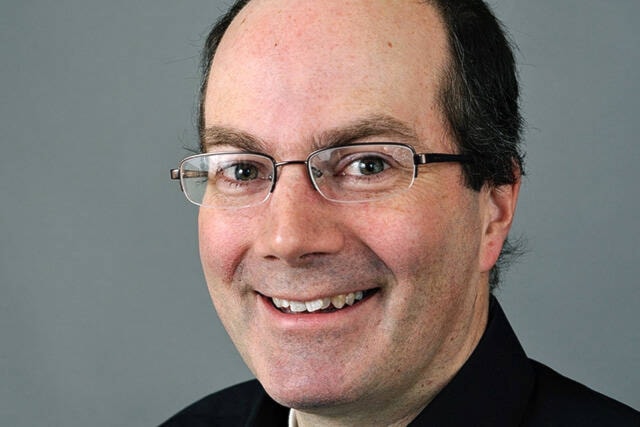President John F. Kennedy famously said “Ask not what your country can do for you – ask what you can do for your country.”
That applies to members of a federation as well as to citizens.
However, the three territorial premiers recently gathered in Whitehorse to focus on just the first part of JFK’s sentence: what Canada can do for us.
The territorial summit resulted in a request for even more money from the feds than we already get.
As reported in the Yukon News last week, Premer Silver was “unable to put a dollar figure on their demands.” But citing sovereignty, security and climate change, Silver put funding for “critical infrastructure, highways, airports, energy, digital security and telecommunications” on the territories’ wish lists.
Negotiations in a federation usually involve some give and take. How the eyes must roll in Intergovernmental Affairs ministries in Ottawa and the provincial capitals when the three territories focus only on the take.
Especially since the generosity of the federal government North of 60° is hardly a secret. The federal Department of Finance publishes a handy website with the latest standings in the Transfer Payment League.
Major federal transfers to the Yukon in 2022-23 will be $28,497 per person. That’s six times what Ottawa gives to PEI, the most fiscally forlorn province. It’s 18 times what the feds send to Newfoundland, a province currently in a profound fiscal crisis.
And that doesn’t even count various smaller programs or federal cheques to Yukon First Nations or municipalities.
How much more than $28,497 per person do we want?
It makes you wonder why the premiers didn’t have a number to announce. Had they not done their homework? Or, given the Ottawa eye-roll factor, were they embarrassed to say a number out loud?
There is also the question of what economists call an economy’s absorptive capacity. With a labour shortage and a housing shortage, if we got a big increase in federal funding it would require workers from Outside to move to the Yukon. The projects would be worthy, but where would the workers live?
It’s intriguing to think what a Yukon give-back to the nation might look like.
One option would be to support Canada’s new Critical Minerals Strategy. The Ukraine crisis has highlighted how dependent Canada and our allies are on places like Russia for key metals such as nickel, palladium, aluminum and copper. A modern economy needs these for everything from stainless steel to your electric car’s battery to the wires in your smartphone. And the climate transition will require vast quantities of these metals for our solar panels and electric vehicles. The International Energy Agency thinks that we may need more than twice as much copper per year, for example, for our clean energy gear as we use today.
Could the territorial government move beyond platitudes and do something practical to advance the controversial Casino megamine near Carmacks? A major new copper mine in a geopolitically secure location with strong environmental and social regulation would be welcome in Ottawa and allied capitals.
Another option would be to offer to be the test market for game-changing low-carbon technologies that, if successful, could be rolled out across Canada.
The Yukon government could tell Air North that all its travel to Vancouver, Calgary and Toronto will be on the Yukon’s favourite airline, and that they will pay extra for Air North to blend Sustainable Aviation Fuel into its tanks. The Yukon government would get to say it had drastically reduced the carbon emissions from its employees’ air travel, while also helping kickstart the Sustainable Aviation Fuel refining industry in Canada.
Another controversial idea would be to volunteer to be the test market for one of Canada’s new generation of Small Modular Nuclear Reactors. The Yukon government is studying the idea, but has not yet put up its hand to be at the front of the line. Eielson Air Force base in Fairbanks is expecting its five-megawatt mini-nuke to start operating by 2027, so the idea may not be as outlandish as it sounds.
Or the territorial government could push the Eavor geothermal energy project more aggressively. Calgary-based Eavor has developed a technology that involves drilling kilometres deep and inserting a closed loop pipe system that captures the deep earth’s heat without requiring complicated and environmentally fraught fluid exchanges with hard-to-find underground aquifers. This heat can be used to generate electricity or heat buildings. The company recently raised $100 million from sophisticated international investors including Singapore’s Temasek and Chevron.
The federal Department of Natural Resources sponsored a full-scale demonstration project in 2018 and says this “has proven the technical feasibility of the Eavor-Loop technology, enabling pursuit of commercial scale development.”
As any geologist will tell you, the Yukon has a lot of hot rocks. Eavor and the Little Salmon Carmacks First Nation’s development corporation signed a shared-ownership deal more than two years ago, yet progress towards construction and operation moves at a glacial pace. A large commercial deployment could deliver much-needed carbon-free electricity for the Yukon, and provide a reference project for deployment in the provinces.
There are lots of other ideas out there. Next time the three territorial premiers meet, I suggest they talk about what they can do for Canada as well as writing Santa letters to Ottawa.
Keith Halliday is a Yukon economist, author of the Aurore of the Yukon youth adventure novels and co-host of the Klondike Gold Rush History podcast. He is a Ma Murray award-winner for best columnist.
